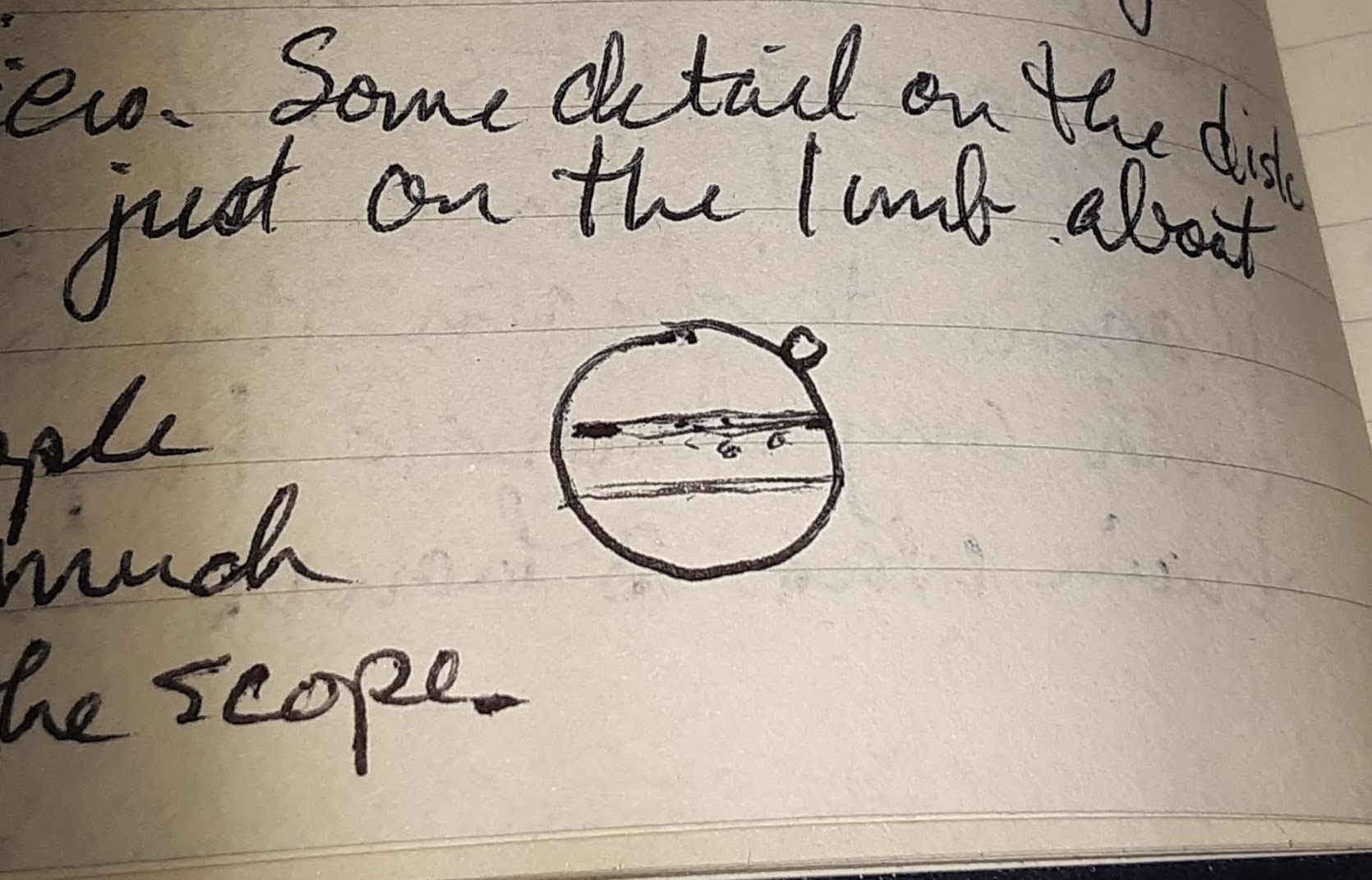To begin with, here is the link to my pictures from the Allegheny Observatory over at the Googles, taken on my trip there Friday, July 27, 2018. There is some commentary there that will likely overlap with this entry, the core of which was itself written on August 4, 2018, on the train to Chicago at the beginning of the Grand Tour. Here we go.
It has been a wild week or two. I went to Pittsburgh last week for Dad’s birthday and went with Meredith to the Allegheny Observatory. That all came together suddenly, of course. I arranged to go to a Pirates (baseball) game with Dad and Meredith, and in communicating that to Dad, he sent me a note reminding me about the tour schedule at the observatory – Thursdays and Fridays only. Well, the ballgame was on Saturday, so…. I called and left a message Thursday hoping for room in the Friday tour. How popular can this be? I thought to myself.
An Unexpected Journey
Went hiking with Ken K. in Harpers Ferry on Friday morning and heard from the observatory at 1:30 that there was no room on the tour that night. Huh. Not expecting that, but oh, well, okay. I lallygagged around the house a bit, thinking there was no urgency to get to the Burgh. Then I got a call from the observatory at 4:30 that there was a cancellation, and they had spaces available at 8:00! Well, it’s a four hour drive, but yes, of course I’ll take 2 please!
I threw myself and my stuff in the car and drove like crazy to get there. I called M. to have her meet me there. When I hit the turnpike I realized I didn’t really know where I was going. This will end up being a recurring theme, as I had the same problem finding the Holmdel Horn, you may recall. I didn’t have an active smartphone, just my flippy, and I didn’t even have a GPS box in the car. Turns out I didn’t have a PA map in the car, either, let alone a Pittsburgh map. So I stopped at one of the rest areas along the way and set about to buy a map. By the time I found one, about 6 or 8 people had lined up at the counter ahead of me. Ugh! I don’t have time for this! So I opened the map and took a couple pictures of the area around the Allegheny Observatory, and hit the road. Not really proud of that, but it got me there. Except for the part where I missed a turn and ended up going over the Fort Pitt Bridge and through the tunnels toward the airport instead toward the Northside. A little looping around, back across the Westend Bridge, and I was back on track with minimal panic. I arrived about 8:20 p.m., so Whoohoo! Don’t do the math; I was driving fast. Even so, I missed all the introductory lecture and history. The group was just starting on the tour of the building, and M. saw me at the door and let me in.
The Observatory

The building is a mix of Art Deco, Greek revival, and 20th century scientific lab. We saw some of the museum pieces and labs and such before seeing the two big refractors, which were both very cool: the 30-inch Thaw refractor, which is f/18.8 with a 47-foot long optical tube (!) having been designed and built by Brashear Optical in 1912 (according to the website), and the 13-inch Fitz-Clark refractor. This latter was originally designed and built by Henry Fitz Optical of New York in the 1860s. There is a fascinating story of how the objective lens was stolen and held for ransom, but the director wouldn’t negotiate with terrorists. It was eventually returned, but it was ruined in the process. The observatory hired Alvan Clark to refigure it, which he did, making it a greatly improved instrument. Hence, it is the Fitz-Clark. The tour was quite interesting. Our docent was knowledgeable, having worked or volunteered at the observatory for something like 25 years. He did have an odd verbal tic of sighing dejectedly in the middle of most of his sentences, but otherwise, he was quite good. We got to see how the Thaw scope slews and how the floor is actually an elevator to line you up with the instrument so as to avoid ladders and falls and broken bones. This was fascinating and some brilliant engineering, considering everything was designed to be run without electricity!
The Observing
We got to take turns looking through the Fitz-Clark at Jupiter, as Jupiter was the only thing peeking through the clouds. [Clouds will also become a recurring theme.] Beautiful view, nevertheless. Some detail on the disk, and Ganymede was just on the limb about to disappear. There were about 40 people on the tour, so there wasn’t much chance to hog the scope, unfortunately. Any way, it was very fun to be there with Meredith, and she enjoyed it, too.

Epilogue
Just a couple weeks ago Jacob and I watched a documentary about the Allegheny Observatory and some of its key figures on Netf… a movie streaming service. It’s called Undaunted: Forgotten Giants of the Allegheny Observatory. It was fascinating! It made up much of the knowledge I might have gained in the lecture if I had lived an hour closer to Pittsburgh, or if I had better planning skills.
